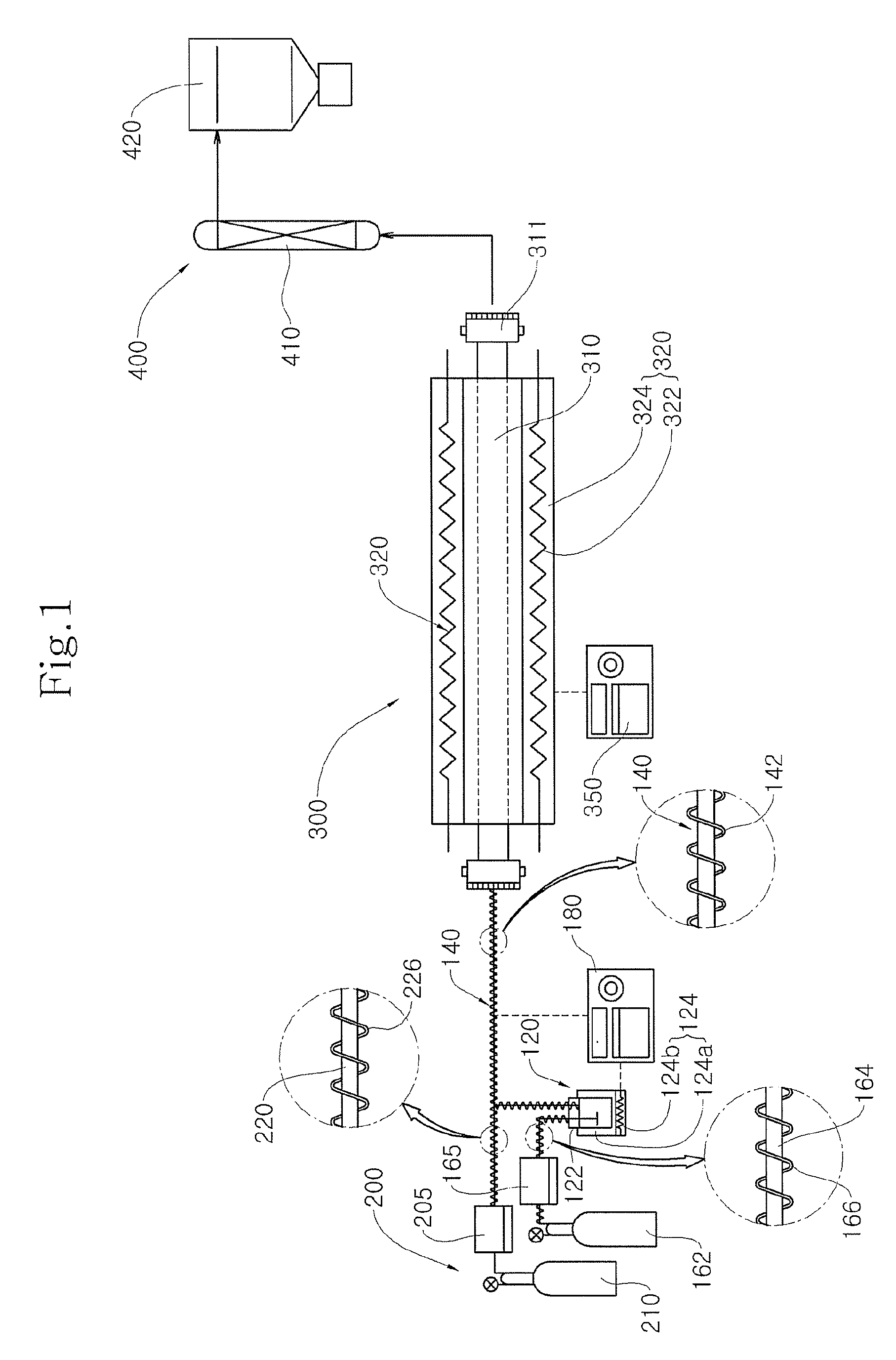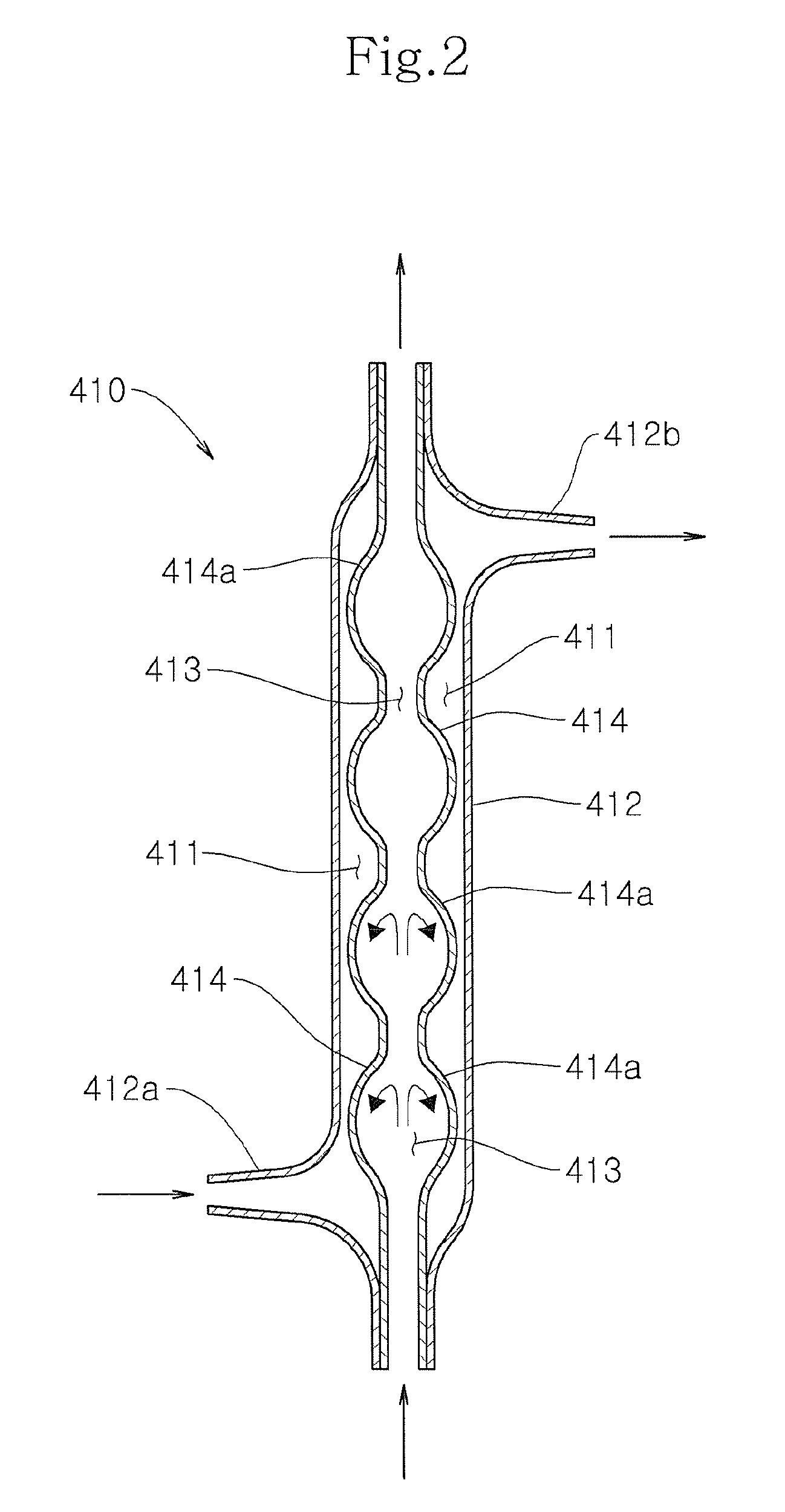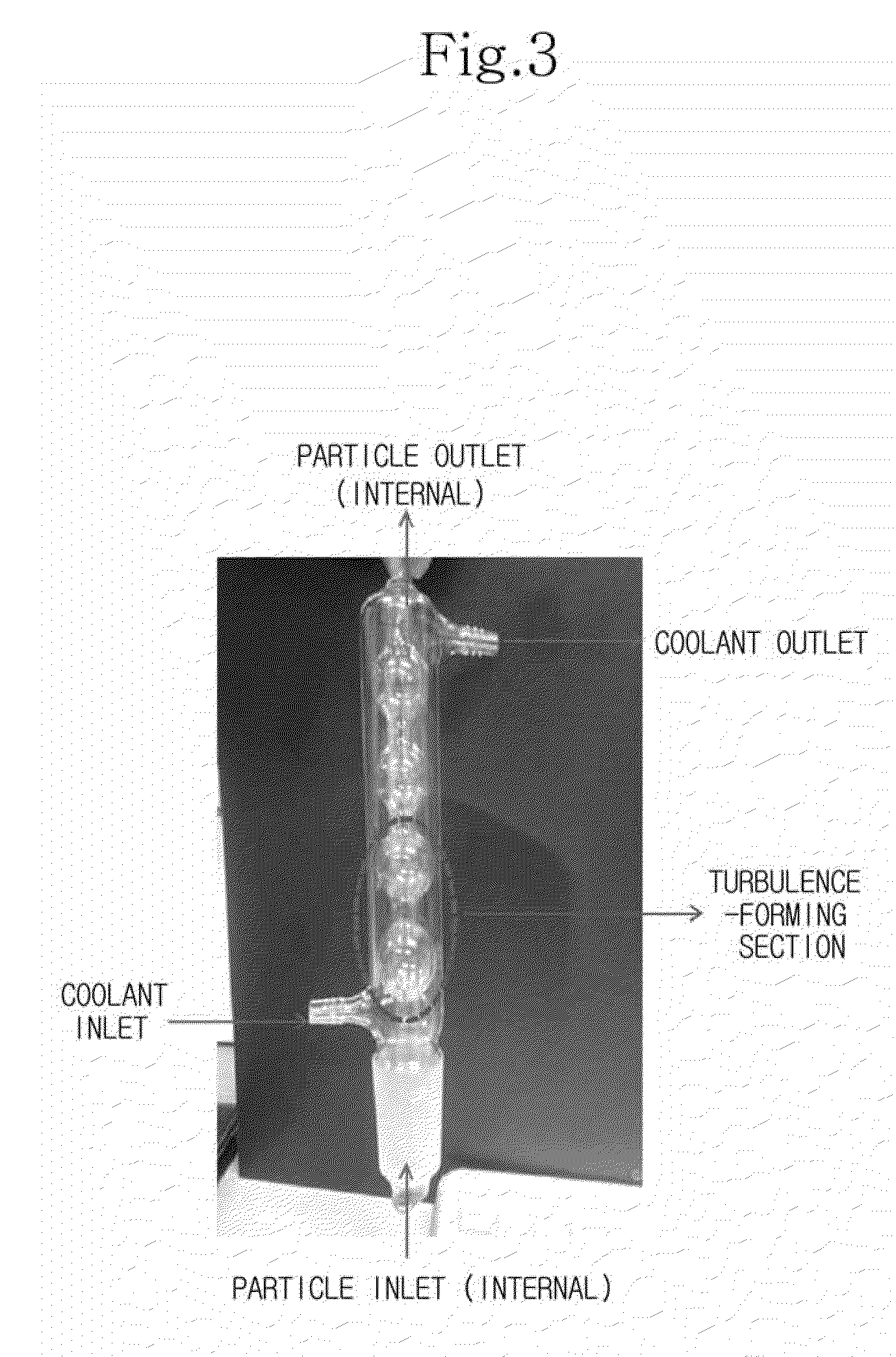Vanadia—titania catalyst for removing nitrogen oxides and method for manufacturing the same
a technology of nitrogen oxide and catalyst, which is applied in the direction of physical/chemical process catalyst, metal/metal-oxide/metal-hydroxide catalyst, and separation process, etc., can solve the problems of low catalytic activity, large number of operations required in the process, and long time of several days or more to prepare the catalyst carrier, etc., to achieve high dispersibility in the supporting, improve the pore volume, and the specific surface area is large
- Summary
- Abstract
- Description
- Claims
- Application Information
AI Technical Summary
Benefits of technology
Problems solved by technology
Method used
Image
Examples
example 1
Preparation of Titania (TiO2) Particles
[0104]Titania (TiO2) particles are prepared via chemical vapor condensation by using the apparatus as shown in FIG. 1.
[0105]First, titanium tetra-iso-propoxide (TTIP, Ti[OCH(CH3)2]4, available from Kanto Chemical Co. Inc, Japan) is introduced as a Ti precursor to the bubbler 122 of the titanium precursor supplying unit 100 of the apparatus as shown in FIG. 1, and is allowed to evaporate by maintaining the temperature at 95° C. by using an oil bath. Next, Ar gas is injected into the bubbler 122 of the titanium precursor supplying unit 100 as a carrier gas at a flow rate of 0.7 L / min to convey and supply the evaporated Ti precursor to the reaction tube 310. In addition, air is introduced into the reaction tube 310 at a flow rate of 7 L / min through the oxygen supplying line 200.
[0106]Then, the reaction tube 310 is maintained at 900° C. by using an externally warmed electric furnace to produce TiO2 particles. After that, the fluid containing the ho...
PUM
| Property | Measurement | Unit |
|---|---|---|
| temperature | aaaaa | aaaaa |
| temperature | aaaaa | aaaaa |
| temperature | aaaaa | aaaaa |
Abstract
Description
Claims
Application Information
 Login to View More
Login to View More - R&D
- Intellectual Property
- Life Sciences
- Materials
- Tech Scout
- Unparalleled Data Quality
- Higher Quality Content
- 60% Fewer Hallucinations
Browse by: Latest US Patents, China's latest patents, Technical Efficacy Thesaurus, Application Domain, Technology Topic, Popular Technical Reports.
© 2025 PatSnap. All rights reserved.Legal|Privacy policy|Modern Slavery Act Transparency Statement|Sitemap|About US| Contact US: help@patsnap.com



